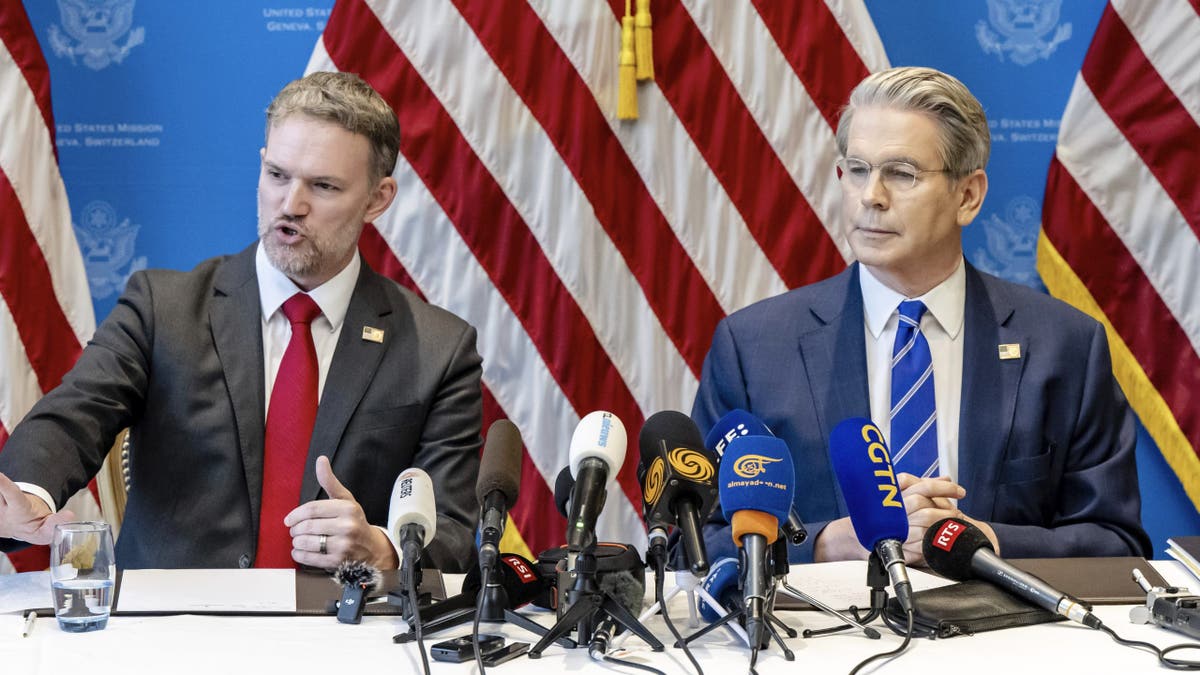newYou can listen to Fox's news articles!
The US and China recently announced a major easing of tariffs, with both countries agreeing to cut 90-day window duties. Financial reporting praised the move. Stocks have recovered. The headline has been dragged out in the global market and declared bailout in a heavy trade war. However, while most sticking to the immediate impact of novel tariffs, the more meaningful developments were barely noticed.
Quietly, Washington and Beijing agreed to establish a formal “trade consultation mechanism,” a permanent bilateral platform to maintain structured consultations on currency policies, market access and non-tariff barriers. Although it is a bureaucratic tone, this institutional move may prove to be the most consequential economic change of the year.
Trump says Chinese trade opens markets for US business
This is because it relates not only to trade logistics, but also to the foundations of the global economic system. The imbalance between the US and China is not simply a problem of bad trade transactions or US overdose. This is a structural issue embedded in the international financial framework, and for the first time in a generation, both countries seem ready to speak seriously about it.
Will a tariff ceasefire with China give President Donald Trump a political bounce? (Fox News)
This deep imbalance comes from Stephen Milan, who now chairs the President's Economic Advisory Council, sorts extraordinary details in a 41-page report published in November 2024. Overproduction. These excess savings are recycled to the US financial assets, particularly the Treasury Department. This supports the dollar and erodes American production.
result? A biased economic order in which the United States acts as a last resort and consumer of global debtors.
Milan calls this the “The World of Triffin,” referring to the famous dilemma of economist Robert Triffin. If a country's currency is also a global reserve, it will ultimately be impossible to balance domestic and international obligations. The US must run a deficit to meet global demand for secure assets. Meanwhile, surplus countries are eschewing the necessary reforms at home as their systems reward models with high exports.
China's property crisis and slowing growth illustrate the limits of its export model. Meanwhile, the US is facing deficits, political polarization and industry decline. Neither side can afford to ignore the defects in the whole body.
In theory, tariffs are a way of opposing this imbalance. But they are crude and often counterproductive. Miran proposes structural readjustment. It realizes currency values, reflects the underlying economic situation, discourages excessive reserve accumulation, and promotes a more balanced flow of capital.
The fact that this new US-China mechanism explicitly includes debates on currency and non-tariff measures suggests that Milan's framework is already affecting policy. This is more than a detente. This is the first real move to relax Bretton Woods II.
It is also important to understand what happens when such imbalances are allowed to persist. History shows that unresolved economic distortions tend to escalate into geopolitical conflicts. During the interwar period, the failure to manage compensation led to a European deflationary spiral. Germany's economy collapsed under the weight of austerity and fixed exchange rates, leading to widespread unemployment, social unrest and ultimately war.

US Trade Representative Jamieson Greer, left, and US Treasury Secretary Scott Bessent attended a press conference on Monday, May 12, 2025 in Geneva, Switzerland, after a two-day closure door discussion on trade between the US and China.
We're not there yet, but the warning signs are clear. China's property crisis and slowing growth illustrate the limits of its export model. Meanwhile, the US is facing deficits, political polarization and industry decline. Neither side can afford to ignore the defects in the whole body.
That's why a new committee is important. For the first time, Washington and Beijing are showing their willingness to engage in structural dialogue beyond tactical measures. You may not be able to grab the headline, but for those who are paying attention it's a big pivot.
Critics will say this is just another diplomatic forum. But there's a reason to believe it's more. Milan's appointment to the White House's top economic advisory mail shows that these ideas have the highest level of currency. And the consistency between his policy formulation and the scope of the new committee is difficult to ignore.
For more information about Fox News, click here
To be clear, this is not easy. The system didn't come here overnight and it won't be released anytime soon. But creating this platform is the beginning. It acknowledges the true roots of world trade tensions not as a battle between exporters and importers, but as a distortion of incentives burned into the architecture of international finance.
The US needs to seize this opportunity. Rather than settling on iconic tariff wins and short-term market profits, we need to promote a durable framework that restores balance, rewards production at home, and removes dependencies.
In that sense, this could be one of the clearest examples of President Trump's “art of trade” approach. With regard to leverage, they are willing to clarify the outcome and address root issues rather than surfaces.
Click here to get the Fox News app
So, tariff cuts have earned headlines, but the real story lies in this committee. It is a forum that, wisely used, could become the place where the next phase of the world economic order is quietly drafted.
Ultimately, if America is structurally weakened at home, then America cannot remain strong overseas. This agreement gives you the opportunity to begin rewriting that script.
And it's a transaction worth doing.
For more information about Tanvi Ratna, click here


